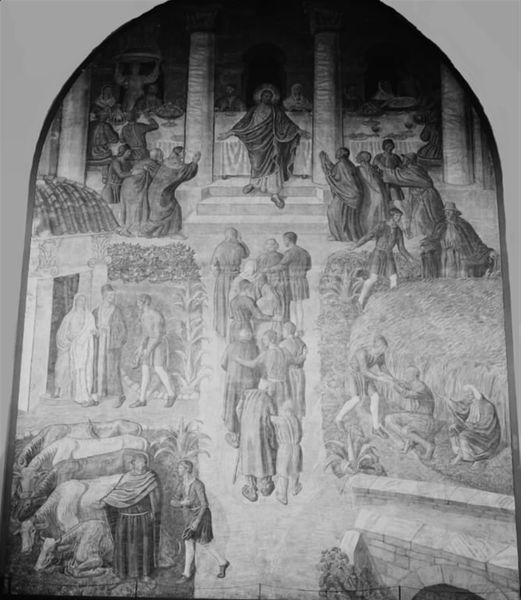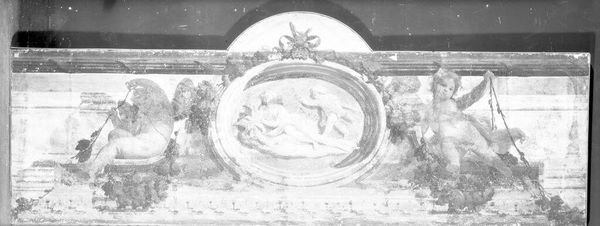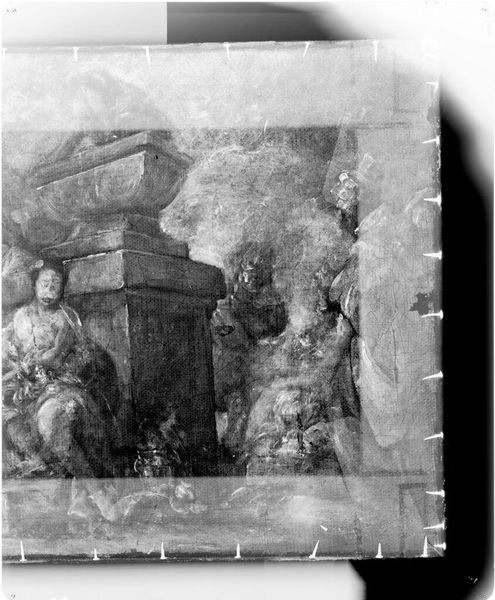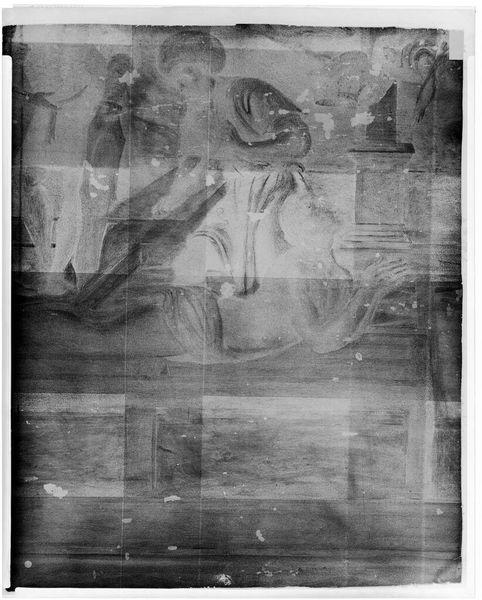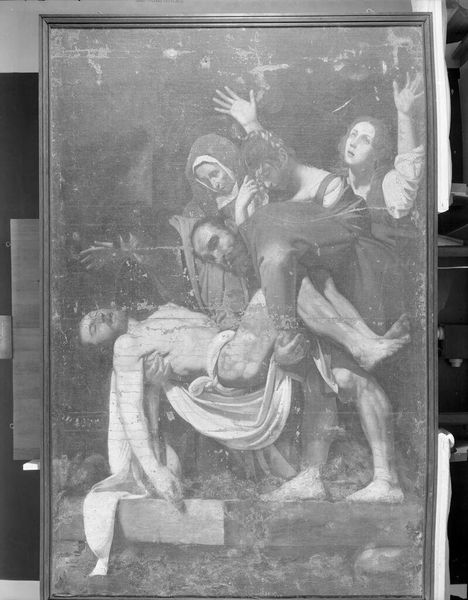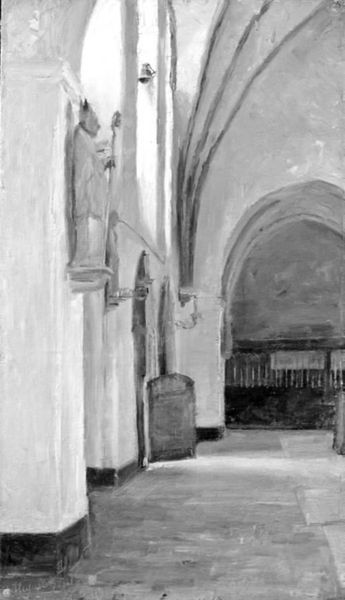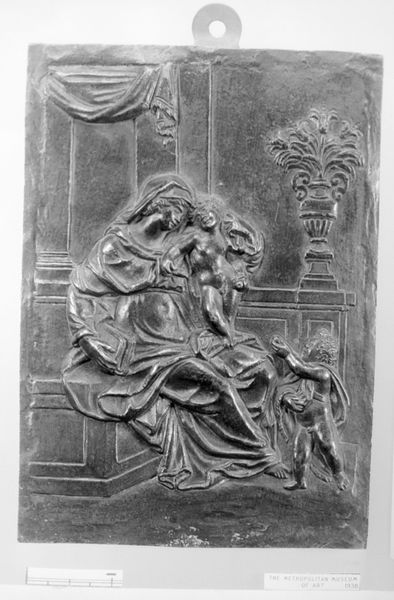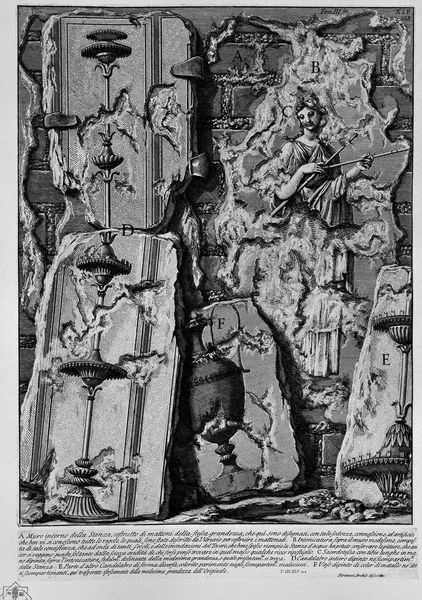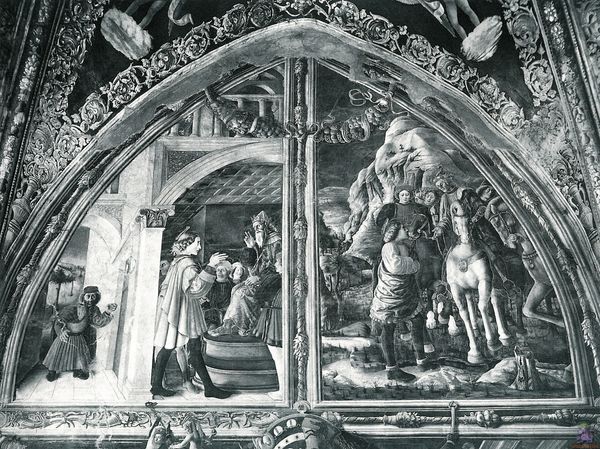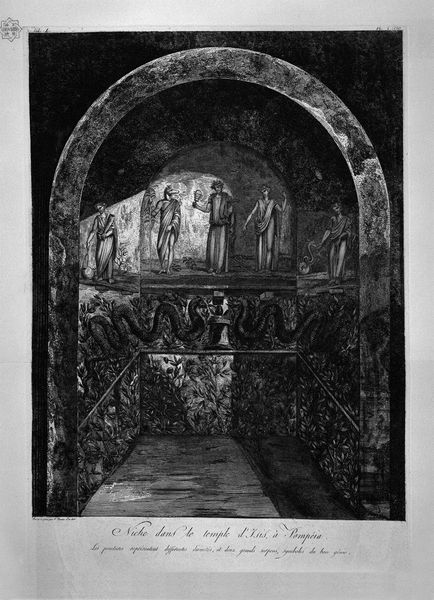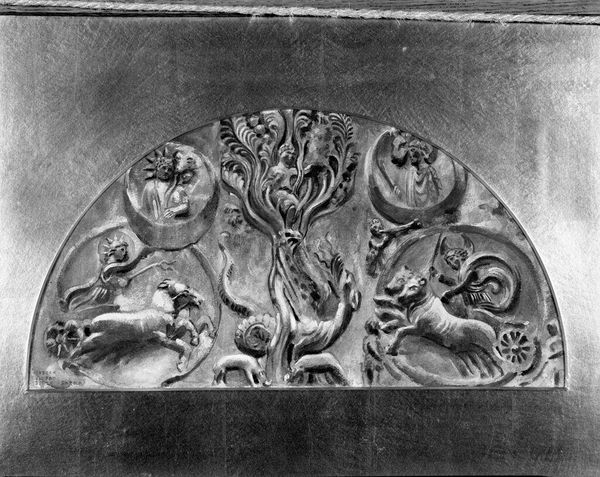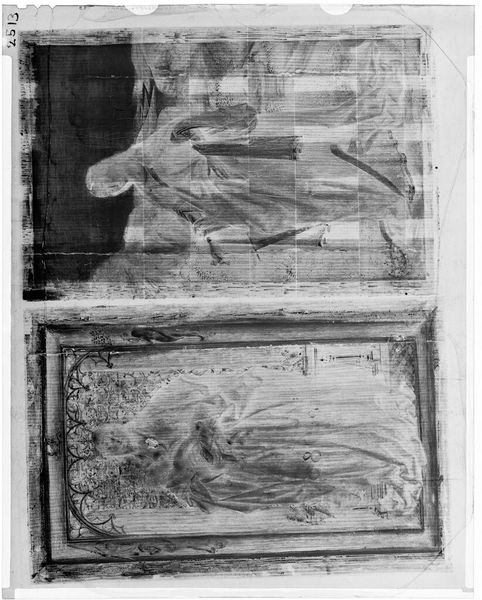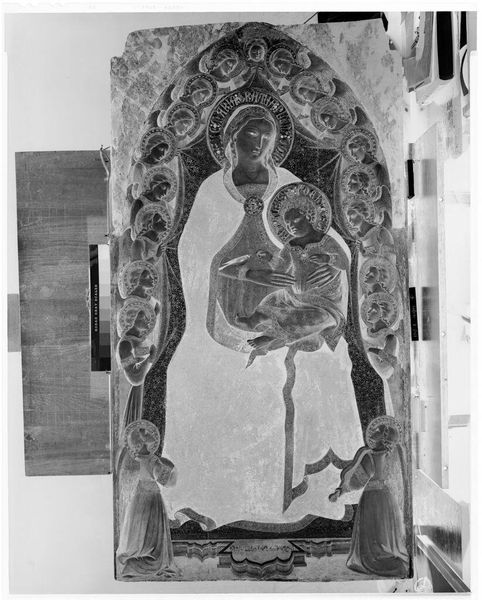
relief, sculpture, marble
#
portrait
#
neoclacissism
#
medieval
#
sculpture
#
relief
#
holy-places
#
figuration
#
sculpture
#
marble
#
italian-renaissance
#
statue
Copyright: Public domain
Antonio Canova carved this marble monument to Pope Clement XIII sometime after 1783, likely in Rome. It’s a powerful statement about the papacy and the social order of the time. Canova worked in the Neoclassical style, which looked back to ancient Greece and Rome for inspiration. But this wasn't just about aesthetics; Neoclassicism was associated with the Enlightenment, a philosophical movement that questioned traditional authority. So, how does Canova, an artist working in this mode, create a monument to the Pope? Here, we see the Pope kneeling in prayer, with allegorical figures of Religion and the Angel of Death. The sleeping lion symbolizes papal strength, while the overall design conveys dignity and solemnity. The tomb attempts to reinforce the authority of the Catholic Church, but through the visual language of the Enlightenment. To understand this artwork fully, we need to look at the history of the papacy, the rise of Neoclassicism, and the social and political context of late 18th-century Rome. Art history is about understanding how art reflects and shapes the world around it.
Comments
No comments
Be the first to comment and join the conversation on the ultimate creative platform.
